The Black & Gold Standard is VandyRadio’s own Commodore Men’s Basketball blog, featuring general commentary, advanced statistical analysis, and game breakdowns throughout the year. Robbie Weinstein of The Homefield Advantage (along with, on occasion, Max Herz) will be bringing you the best coverage of Vandy basketball throughout the offseason following a 2014-15 campaign that saw the program return to the postseason for the first time since 2012. Check out the Black & Gold Standard for all kinds of content leading up to what should be an exciting 2015-16 season for the ‘Dores. All stats are courtesy of Ken Pomeroy unless other wise noted.
With summer well under way, the ‘Dores have returned to Nashville to begin offseason workouts ahead of what should be the most exciting year in a while for Vandy. Possibly the most significant development for the team this offseason was the return of center Damian Jones for his junior year, as VU’s centerpiece opted to hold off on possible NBA plans for at least another season. A handful of Jones’s SEC brethren, however, are hard at work in preparation for this month’s NBA Draft, so I’m here to kill time and break down this year’s prospects. This might well be the last year in a while with no Vanderbilt prospects, as I expect one or both of Jones and Wade Baldwin to play their way into the first round next year. Here’s my 2015 board:
1 Karl Towns, C, Kentucky
Towns’s college production may not jump out to many casual onlookers as far as his raw numbers go, but the UK freshman big man is the complete package. For a prospect with so much room to grow offensively, Towns still managed to put up the fourth highest offensive rating of players in our top 30, all while touting elite rebounding numbers and the second best assist rate among big men. Towns could do a better job protecting the ball and needs to continue to polish his post game, but there’s no doubt that he fits today’s prototype for NBA big men, and his great shot blocking (11.7 block rate) represents a prime explanation for this. It might take KAT a couple of years to put it all together, but he projects as a two-way star in the mold of a bigger Al Horford for years to come. If he can knock down the three like he did in this well-circulated workout video of his (I don’t take these videos real seriously though), then he could end up being a generational player. I don’t doubt this possibility, considering the dude shot 82% from the line as a freshman. Towns is the clear #1 prospect in just about everyone’s eyes.

2 Jahlil Okafor, C, Duke
Okafor is probably known best for his magnificent footwork and highly mature post game, but the number that jumps out most with regards to the Chicago-raised big man is his 14.8 offensive rebound percent, tops in our rankings. Okafor put together a more impressive freshman season than Towns based on his effective and true shooting percentages as well as his sky-high usage rate, but Okafor’s consistently poor defensive effort caused his stock to drop from easily the highest in the draft to that of a player who could fall as far as #5. In today’s NBA, a center who can protect the rim and anchor a team’s defense is paramount and the back-to-the-basket scoring that Okafor provides isn’t as important to teams as it once was (sounds like a perfect fit for Byron Scott and the Lakers, no?). Okafor, however, is a player that you can run your offense through and he could well average 15 and 10 in his first season. Even without knowing where he’ll be playing, Okafor is probably the frontrunner for Rookie of the Year.
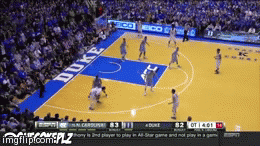
3 D’Angelo Russell, PG/SG, Ohio State
Probably the most gifted offensive player in the draft along with Okafor, Ohio State’s D’Angelo Russell brings just about every skill you could possibly ask for from a guard on that end of the floor. At 6’5” and with a 6’9” wingspan, Russell has the size to play either the 1 or the 2, and which position he starts out at may depend on the team that drafts him. Any guard with this type of size to go along with elite three point shooting and passing has potential to succeed in the NBA, and comparisons to James Harden (although, statistically, a mix between Harden and Brandon Knight is more appropriate) speak to Russell’s impressive polish. Russell has a ways to go on the defensive end, but his well above average physical profile suggests that repetition and increased effort may yet see him transform into an above average defender. The debate between Russell and Emmanuel Mudiay at number three is an intriguing one, but the fact that NBA defenders will have to respect Russell’s jump shot and can’t simply back off of him gives him the edge over the Congo-born Mudiay in my book.
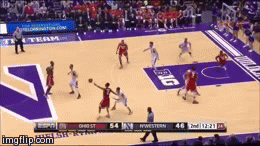
4 Emmanuel Mudiay, PG, Congo/China
The impressive numbers Mudiay put up in China this season are nothing to scoff at; 18 points, 6 rebounds, and 6 assists with good shooting percentages is an excellent line for an 18 year old playing his first year of pro ball in an unfamiliar country. There are, however, a few doubts regarding Mudiay as a prospect that worry me more than other onlookers. Mudiay shot only 57% from the free throw line on about 4 attempts per game in China, and ESPN writer Kevin Pelton has detailed in the past how free throw shooting correlates stronger with NBA three point shooting than does college or overseas three point shooting. Past point guards such as Rajon Rondo and Andre Miller have shown that lead guards can still succeed without a good three point shot, even in today’s NBA. This is getting more difficult to do as the game continues to evolve, however, and this concern coupled with Mudiay’s high turnover numbers is just enough for me to keep the Congo native behind Russell at number 4.
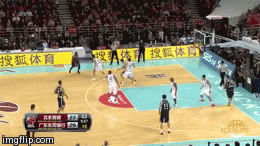
5 Justise Winslow, SF, Duke
Duke’s run to the national championship highlighted Winslow at his best: a tough and versatile defender who is more than capable offensively and can consistently knock down the three. With a number of the NBA’s biggest stars playing the 3, teams who don’t employ LeBron James or Kevin Durant need a player athletic and strong enough to keep these guys in check all while remaining a net positive on the offensive end. Winslow can do just that, and while his poor free throw shooting would seem to indicate a lack of touch, the Blue Devils freshman hit nearly 42% from three on almost 3 attempts per game. One question with regards to Winslow comes in the form of his subpar combine measurements, as he stands less than 6’5” in socks. A 6’10” wingspan helps the cause, but there’s no getting around the fact that Winslow is somewhat undersized. If Winslow can keep up his above average outside shooting in the NBA, however, his excellent defensive tools (emphasized by his top-notch rebounding percent that stands second among wings, above average steal and block rates, and reliability defending on the ball) should overcome his relative lack of height and make him a valuable starter for years to come.
6 Willie Cauley-Stein, C, Kentucky
At this point, NBA front offices must make a choice between potential and safety. Cauley-Stein’s elite mobility and defensive leadership make him a safe pick who could likely anchor a defense for the next 10 years, similarly to how Tyson Chandler, DeAndre Jordan, and Andrew Bogut are used. The newly-named “Trill” doesn’t project as the post defender that these three are, but his ability to switch out on perimeter players and smother ball handlers offers a glimpse into exactly how useful he might be in defending the pick and roll. Ball screen defense is of the utmost importance in today’s NBA considering how incredible the point guard play is in the league right now, and WCS’s ability here makes up for his lack of any offensive game. If Cauley-Stein can simply develop into an effective finisher off of lobs and dump-offs, he will make a lot of money as the leader of an elite defense.
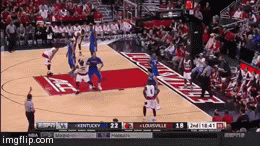
7 Mario Hezonja, SG/SF, Croatia/Spain
Hezonja’s multitude of skills and solid production against strong competition make him an intriguing prospect who could easily be taken ahead of Cauley-Stein if just one general manager feels like taking a risk. At 6’8”, the Croatian has fantastic size for the wing and the necessary skills to develop into a high caliber starter based on his shooting, passing, and very good athletic ability. Hezonja doesn’t fit the European stereotype in that he shows the ability to finish at and above the rim and can get out in transition better than most other wing prospects in this draft. The knock on Hezonja, basketball wise, is his inability to get to the free throw line and his hesitancy when it comes to passing the ball. Rumors persist that Hezonja’s club, Barcelona, benched him for much of the season in a last-ditch attempt to deflate his NBA stock, so Hezonja’s uneven play must be taken into context. This also goes for the multiple reports that exist detailing the 19-year-old’s immaturity, lack of coachability, and poor attitude. Hezonja is a risk, but, when it comes to strictly on-court play, he might be a better a prospect than Winslow. Unfortunately, no one evaluates prospects in a vacuum, so Hezonja slips down one spot.
8 Myles Turner, C/PF, Texas
Picks seven to nine look likely to present significantly above average value for their respective slots this year, and the rise of Myles Turner is a part of this. A seven foot shot blocker who possesses an unusual combination of size and shooting touch, Turner represents exactly what NBA teams are so desperate to find: a big man who can provide both rim protection as well as spacing, two of the most valuable commodities in today’s game. A school of thought persists that suggests Turner had an underwhelming season at Texas, but his stats match up quite favorably with other frontcourt prospects despite the fact that many believe he was misused by Rick Barnes, who has since been fired and been scooped up by an ugly-orange-wearing school to our east. Turner’s upside is tremendous and he may be less risky of a prospect than some once thought, as he has tweaked his bizarre running mechanics a bit and has been cleared by all doctors he’s seen. Turner could end up rising even higher than eight, as his 84% free throw shooting suggests he could well develop into a solid three point shooter in the NBA, while his elite defensive rebound and block percentages underscore his defensive tools.
9 Kristaps Porzingis, PF, Latvia/Spain
Kristaps Porzingis is a 7’1” skilled power forward that put up strong numbers in the ACB for Sevilla this year while getting significant playing time; there’s no way he should be all the way down at 9 on my board. Yet, I can’t put him ahead of Turner due to the Texan’s upside, nor above Hezonja or Cauley-Stein due to the fact that I prefer their respective skill sets to that of Porzingis. Regardless of whether Porzingis remains on the board when the ninth pick rolls around (he probably won’t be), the team picking here will get great value. Porzingis is a very good shooter for his size, with range out to the NBA three point line. He runs the floor hard and has above average athleticism, and while the big man desperately needs to add weight, he’s got the tools to become an above average defensive player as well. A below average feel for the game along with questionable toughness, however, are reasons to give pause with regards to Porzingis. How sure can we be that he will ever be more than a shooter? Will his body, and his game, round out? Most think the answer to both those questions is “yes,” but I’ve got enough doubts to bump Porzingis down to 9.
10 Stanley Johnson, SF, Arizona
In this draft, there seems to be a significant drop-off from 9 to 10. I’m a fan of Stanley Johnson, however, and, at the same time, I think it’s fair to say that there is another significant drop-off from 10 to 11. Johnson has the attitude of a star and at times carried one of the top teams in the country offensively in college. He shot the ball pretty well from the perimeter and played tough, physical defense; he plays hard. Turnovers and shaky decision-making were the main problems for Johnson, as his 17.4 turnover rate is quite high for a small forward prospect. Similarly, Johnson too often drove into the paint with no plan and put up a bad shot in traffic, which partially explains his below average 2-point percentage. Regardless of whether or not Johnson is able to improve his finishing at the rim, I think he’s a fairly safe pick and is likely to provide value as a good defender and a capable offensive player. Not many players behind Johnson provide multiple skills that are safe bets to translate to the pros, so I’d be somewhat surprised if Johnson drops past 12 or 13. He has a relatively small range for a late lottery prospect.
11 Kelly Oubre, SF, Kansas
Kansas’s Kelly Oubre is the type of prospect that is a likely lottery pick because of what he could be rather than what he is now. It’s at this point where teams usually aren’t going to have the luxury of picking a guy who is both accomplished and presents elite upside, and Oubre is no exception. Oubre stands at 6’7” and while his 203 pound frame needs work, his body fat percent was among the lowest at the Draft Combine. With a 7’2” wingspan, Oubre presents an intriguing blend of physical traits that points to high upside on the defensive side of the ball. The 19 year-old played with little effort on defense at Kansas, however, and was just so-so on offense. Decent free throw and three point shooting for Oubre point to solid potential as a shooter in the NBA, but he no-showed quite a few games and wasn’t very consistent. Oubre should be good if his attitude issues don’t prove to be problems, but it will be tested if he starts out in the D-League, which is a distinct possibility.
12 Devin Booker, SG, Kentucky
This year’s NBA playoffs (and, really, the entire season) have shown that shooting and good spacing in the halfcourt is a necessity for good NBA offenses. Booker might be the best shooter in the draft and presents above average size at 6’6”, and these two factors alone vault him up from mid-first round pick status to somewhere in the late lottery. I’m actually ok with the comparisons to Klay Thompson based on the fact that their respective physical profiles are almost exactly the same. Booker actually tested out as a bit more explosive vertically than Thompson, but the difference comes in their play on the floor; Booker had the luxury of being surrounded by four other good to great college players at pretty much any time on the floor and didn’t have to carry the Kentucky offense at any point in time. If Booker can prove to be an average or better defensive player in the NBA, he will see a lot of playing time and play an important role on a playoff team. If not, he’ll be relegated to coming off the bench in a role similar to Marco Bellinelli’s.
13 Frank Kaminsky, PF/C, Wisconsin
“Frank the Tank,” as he’s called, basically is what he is. Kaminsky will provide good offense at the four or five, both inside and out. He can shoot the three out to the NBA line, he can score in the post, and he can handle the ball and drive the lane against most defenders. Kaminsky should be a useful offensive player in the NBA, but it’s unclear if he can defend anyone. Karl Towns and others routinely pushed Kaminsky around in the post, and it’s doubtful that the big man can effectively guard faster, more mobile power forwards in the pros. A large part of Wisconsin’s defensive philosophy is centered around not fouling, and clearly the Badgers could not afford for Kaminsky, the national player of the year, to get into foul trouble at any point. This could partially explain Kaminsky’s poor post defense, and if the big man can guard anyone at the next level, be it centers or power forwards, he will have a good career. If not, he can still make his way as a floor-stretching power forward who teams can hide on opponents’ poorest offensive player.
14 Rondae Hollis-Jefferson, SF, Arizona
I’ll get this out of the way early: Rondae Hollis-Jefferson is my favorite player in the draft. RHJ plays as hard as anyone and rocked the athletic tests at this year’s combine. He’s a deceptively skilled passer, an elite defender, and a very good rebounder. Rondae, however, has the ugliest outside shot of any player in the draft. One video of a workout of Hollis-Jefferson’s shows him knocking down NBA threes with what looks to be a considerably revamped shot motion, but in reality it’s going to take him years to make himself into even an adequate three point shooter, if he’s ever able to get there (many think he won’t). Wing players such as Tony Allen and Corey Brewer show there is value for great perimeter defenders even without a three point shot in their arsenal, and I think RHJ could play a lot of power forward a la Draymond Green. Some have their doubts about Hollis-Jefferson, but his stock appears to be trending upward, and I’d take the NCAA’s 2014-15 Mean Muggin’ Champ on my team any day.
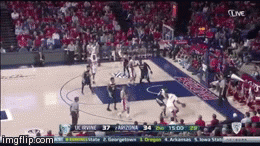
15 Sam Dekker, SF, Wisconsin
Although Dekker played the role of a star on one of the nation’s elite college teams this past season, he is probably most attractive as a prospect for his tremendous physical profile, versatility, and athletic gifts. In short, despite that fact that he isn’t a likely candidate to head to the D-League next year, he is still an “upside pick.” Dekker has excellent size for the wing at 6’9” and projects as a good defender and solid ball handler and passer. Whether or not Dekker can develop an average to above average outside shot will serve as the effective inflection point of his career; without one, he probably plays the role of a spot defender off the bench, whereas with one he probably starts on all but about 8-12 teams in the league. Dekker’s shot mechanics are inconsistent, but the amount of practice time pro players have gives him a solid chance to improve that aspect of his game.
16 Jerian Grant, PG, Notre Dame
I wasn’t a big fan of Grant’s until very late in the season, and he’s grown on me even more since the season ended. Much like Kaminsky, Grant is quite polished and is ready to step in right away as a contributor in the league. He’s got a quick first step, he’s a good ball handler, he’s athletic, he plays defense, he’s a very good passer, and he didn’t turn the ball over much his last year in South Bend. Grant’s only weaknesses are his sub-par three point shooting and, to a much lesser degree, his lack of a well-defined position (he’s probably a point guard, and this may not matter much anyways). This video of a recent Grant workout showed off a better-than-expected consistency from three, and although it’s unwise to draw much from what essentially is a highlight video, it doesn’t look like a whole lot of editing was needed here. At this point in the draft, it’s relatively unlikely that a team will pull out a star. Grant, however, is a good player and could help push a fringe playoff team over the top.
17 Bobby Portis, PF, Arkansas
Teams picking at this point have obviously made the playoffs (even though that’s not much of an accomplishment in the East) and simply hope to plug certain specific holes and bolster depth. Bobby Portis provides a good opportunity for a team like Washington or Dallas to do so, as his well-rounded skillset, great motor, and two-way play combine to make him a low risk prospect that could contribute immediately in limited minutes on a solid team. Portis plays very hard and put up big offensive numbers in a conference full of well-built big men. He’s got the type of outside touch that should help space the floor on offense, and will likely extend his range out to the NBA three point line in time. Portis doesn’t project as much of a shot blocker, and his relatively thin frame suggests he will be just an okay rebounder, but you can live with those limitations considering he should be no less than adequate on either side of the ball.
18 Trey Lyles, PF, Kentucky
A key cog in Kentucky’s historic 38-1 squad, Lyles brings good size and touch along with smooth athleticism to the table as a prospect. Lyles had success in college as a mid-range spot up shooter, and that suggests that there is a place in an NBA rotation for the Canadian. Lyles isn’t a very good defender or rebounder, and he doesn’t block a lot of shots (2.1 block % is exceedingly low for a power forward). A fair amount of Lyles’s shortcomings can, arguably, be attributed to the fact that he played out of position at Kentucky as the starting 3. Lyles may not do anything all that well yet, but his potential suggests that someone will take him before 18, and well-known reporter Frank Isola even suggests that Knicks President Phil Jackson has his eyes on Lyles at 4. LOL at that, but selecting Lyles in the late lottery isn’t much of a reach.
19 Christian Wood, PF, UNLV
Wood is a classic high-risk, high-reward prospect. A 6’11” athletic freak with the ball skills of a wing, Wood’s block rate of 8% falls right behind the three elite shot blocking first round prospects of Upshaw, Towns, and Turner. Additionally, Wood is a strong rebounder on both ends and rates as approximately the fifth or sixth best rebounder in my top 30. Wood shot the ball well from the free throw line this year, indicating that he could, in time, step out to the NBA line despite his 28% three point shooting this past year. Sounds like a lottery pick, no? The problem is with Wood’s attitude and selfish play. Wood frequently jacked up crazy shots early in the shot clock at UNLV (something 2013 #1 pick Anthony Bennett also had a penchant for in Vegas), and often preferred to take bad shots rather than pass to wide open teammates. The big man can run the break and get to the basket in the half court, but he tries to play like a wing far too often in an effort to showcase his perimeter skills. Wood has a ton of upside, but whoever picks him will have a lot of work to do when it comes to getting him to play smart, team-oriented basketball.
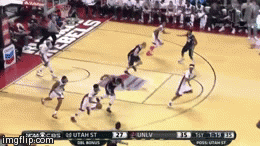
20 Kevon Looney, PF/SF, UCLA
Looney’s profile serves as an illustration of the drop-off after Portis, as every prospect from there on out either seems underwhelming to me in some way or comes with considerable risk for one reason or another. Looney fits a little bit into both of those descriptions, as no one is quite sure what position the 6’9” combo forward will play at the NBA level. A solid shooter and very good rebounder who some say was limited by a somewhat dysfunctional environment at UCLA, Looney doesn’t project as a guy who is athletic enough to play the 3, but his skinny frame and lack of great size suggests he will get bullied at the 4. To go along with poor free throw shooting and 2-point shooting, Looney no-showed four of his last five games and generally didn’t play as well after a hot early season start. I don’t know what Looney is in the NBA, but he’s talented and has potential as a three point shooter. These two traits should probably keep him in the first round, but 20 might even be a bit high. He’s a hard prospect to evaluate.
21 Tyus Jones, PG, Duke
The Most Outstanding Player of this year’s NCAA tournament, Tyus Jones’s strong play on college basketball’s biggest stage helped boost his stock solidly into the first round. Jones is a great offensive player who can shoot, pass, and handle the ball well enough to warrant selection in the lottery. He showed the coveted ability to run a team, but posted a pretty high turnover rate of 17.4. Jones’s upside is limited by his lack of size and athleticism, and this hurts him most on defense. With the amount of pick and roll usage in the NBA, it’s hard to have a top defense with a point guard that is a significant negative on that end, and Jones projects as a below average defender. Jones has shown a strong ability to get to the line (50.2 free throw rate), so maybe his supposed lack of athleticism will prove to be less limiting than it appears.
22 Montrezl Harrell, PF, Louisville
Montrezl Harrell of Louisville might play harder than anyone in the draft, and as a result he possesses strong role player potential in the NBA. Harrell is undersized at 6’7” but his monstrous 7’4” wingspan makes up for that to some degree. He’s a solid defender and rebounder, and excelled in college at drawing fouls. Harrell flashed some potential as an outside shooter late in his college career, but I doubt much comes of that aspect of his game. To be honest, I see Harrell as a candidate to be out of the NBA in three years, but his exceptional motor will help him maximize his chances.
23 RJ Hunter, SG, Georgia State
A 6’6” 2-guard with a 6’10” wingspan, Hunter provides potential as a wing defender and three point shooter – the “3 and D player.” If Hunter had actually shot the ball well this past season, however, he’d probably be ranked higher than this. Everyone knew Hunter was the centerpiece of Georgia State’s offense, so he had to take a lot of difficult, long threes that led to a three point percentage just under 30. It seems that that number will normalize a bit in the NBA, but there’s risk here. Hunter’s 3.6% block rate is good for a guard and underscores the defensive value that he could bring when it comes to contesting shots with his long wingspan. Maybe a team that is undeterred by his poor shooting numbers takes Hunter in the teens or even in the late lottery, but I’m a bit put off by his underwhelming 2-point percentage (49%) against inferior competition in the Sun Belt.
24 Cameron Payne, PG, Murray State
I’ll admit it: I’m a Cam Payne hater. I’ve had him as low as 29, but I moved him up a bit after taking a second look at his numbers against good teams. Payne is a steady performer who brings a bit of everything to the table, but his court vision might be his biggest strength. He’s the classic high-usage superstar at a mid-major school, and his weak 2-point percentage (50%) against OVC competition is concerning, similarly to RJ Hunter’s case. Payne’s combination of an off-the-charts assist rate of 39.8 and a low turnover rate of 14.9 make him a guy that might be underrated at 24, and I’d be very surprised if he drops this far; he could go as high as 11 to Indiana. I don’t see Payne as a player who can get easy shots against NBA competition, so his value might be a bit limited. His lack of size limits his defensive upside as well, but the reality is that there isn’t much separation between Lyles at 18 and Payne here at 24.
25 Robert Upshaw, C, Washington
Upside! Upshaw has been dismissed from not one, but two college teams due to drug problems. Why should an NBA team trust this guy with the guaranteed contract that accompanies first round draft status? I’d say because he’s got incredible talent that can change a franchise’s fortunes if he stays out of trouble. Upshaw stands at 7’ even and was measured with the longest wingspan at the combine at 7’5.5”. These physical gifts manifested themselves in the form of the nation’s best block rate, 17.4%. Combine this with his elite rebounding and solid finishing, and you’ve got a potentially great prospect in the mold of Hassan Whiteside. Of course, the risk with Upshaw is huge, and some teams likely have already ruled out taking him at all in the draft, no matter how far he might fall. I’d likely have Upshaw ranked at least #10 overall without the off-court concerns, and if it looks like the NBPA is going to successfully get marijuana removed from the league drug testing program sometime soon, I would strongly consider taking a chance on the big man if I were Atlanta, Milwaukee, or Washington in the mid-first round. (NOTE: These rankings were put together prior to when Upshaw’s potential heart concerns became common knowledge. If Upshaw is red-flagged by NBA doctors, he drops out of consideration for my top 30.)
26 Terry Rozier, PG, Louisville
Rozier is a divisive prospect, based largely on his status as a high volume, scoring point guard that didn’t shoot the three at a decent percentage at Louisville. I like Rozier’s upside as an athlete; few players are faster baseline to baseline, and he’s a very good ball handler. Rozier is also a tough defender and simply looked better than the competition at the NBA combine’s 5-on-5, and many of his opponents should also fall in the late first round to second round range. I think Rozier can be a good scorer off the bench in the NBA, and I’ve got him ranked here simply because I think he’s a better player than many of these other guys, plus he’s got the upside to go with his current abilities. Plays like this only help his cause.
27 Justin Anderson, SF, Virginia
I had Anderson ranked up around 20, but I’ve soured on him a tad after his poor shooting performance at the NBA combine. It’s a tiny sample size, to be sure, but Anderson has very little value in the NBA if he can’t knock down the three. Anderson is a good individual and team defender who came from a great system at UVA, and he’s one of the best athletes in the draft. If he can go to a team like the Spurs, Warriors, or Rockets where he can sit for a while and hone his shot in practice and in the D-League, he could have a long career as a productive rotation player. I’m skeptical of his ability to step in to an NBA lineup and shoot a good percentage from three particularly soon, however.
28 Jarrell Martin, PF, LSU
Martin’s weaknesses might well be attributed to the fact that he was coached by probably the worst high-major college coach out there in Johnny Jones; his basketball IQ and feel for the game simply aren’t up to par. Tantalizing athletic gifts (look at this!) and decent potential as a shooter might have had Martin as a mid first round pick, but his befuddling decision making held him back this season, illustrated by his high turnover rate of 18.4. Martin put up solid shooting percentages with a pretty high usage rate, but he could use some time in the D-League before he’ll be ready to play an NBA role, especially on the teams that are selecting late in the first round.
29 Cliff Alexander, PF, Kansas
Cliff Alexander’s case is a curious one: he maintains that he was misused at Kansas, but it seems that his attitude could have contributed to his lack of playing time under Bill Self. Alexander made a couple of passive-aggressive comments with regards to Self in a high profile interview with DraftExpress, so one might wonder how his team interviews have gone over. Aside from the somewhat mild character concerns, Alexander doesn’t have a good feel for the game and turned the ball over a lot (miniscule 5.4 assist rate; 16.6 turnover rate). He’s a beast on the boards, however, and generally finishes inside, blocks shots, and has good potential as a mid range shooter. Alexander’s lack of college production, potential attitude problems, lack of size (6’8.5” in shoes), and lack of polish make him a likely candidate to slip to the second round, despite his raw tools.
30 Delon Wright, PG, Utah
The brother of current Portland Trail Blazer Dorrell Wright, Delon burst onto the scene in 2013-14 as a junior college transfer as Utah ascended to the national scene. Wright doesn’t have a lot of weaknesses, as he’s got great size at 6’5.5” and quite literally did everything well, statistically speaking, in college. His outside shooting is considered a concern, but Wright did shoot 36% from outside this past year, granted on only 72 attempts. The main issue with Wright is that he’s 23 years old; anyone playing against guys three and four years younger than him ought to be dominating if they want to play in the NBA. I don’t think Wright has much upside, but having a good backup point guard is important for contenders, and I think he could possibly fill that role.
Check out VandyRadio’s comprehensive Vanderbilt sports blog series. Building the Masonic Tradition covers Commodore football, The Black & Gold Standard covers VU hoops, and Eyes of the Hawk covers Vandy baseball. VandyRadio.com is your home for year-round coverage of your favorite Vanderbilt teams.

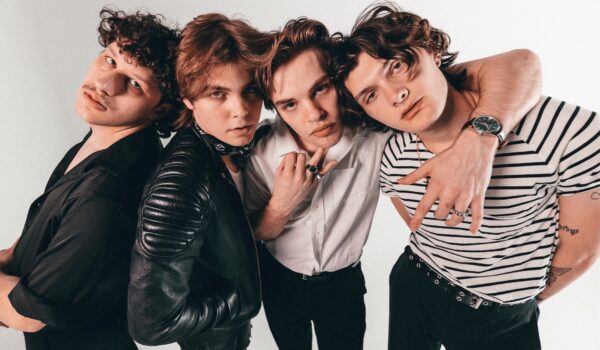
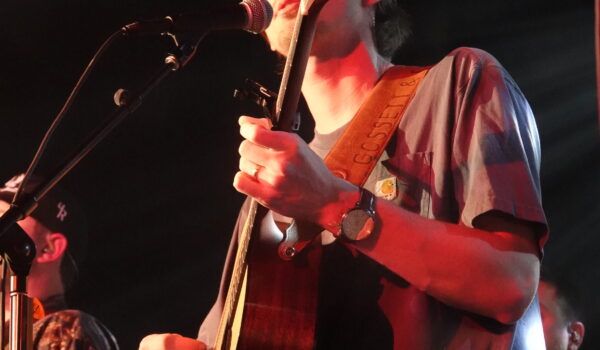

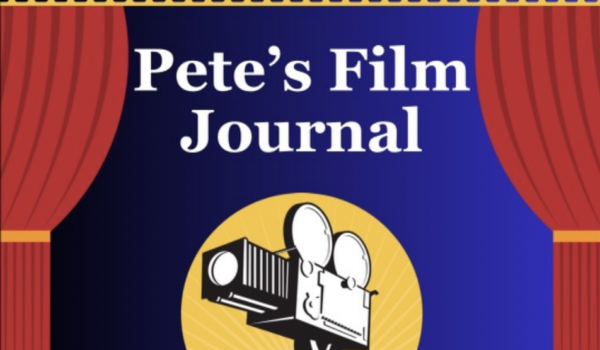
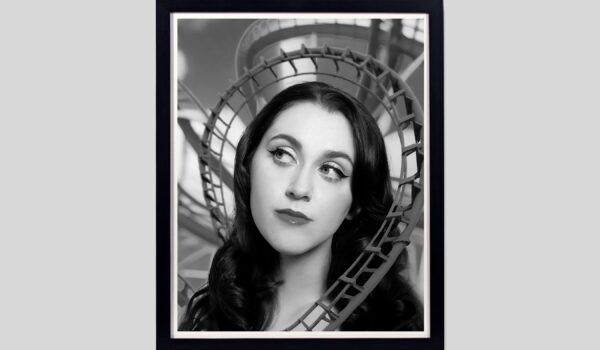
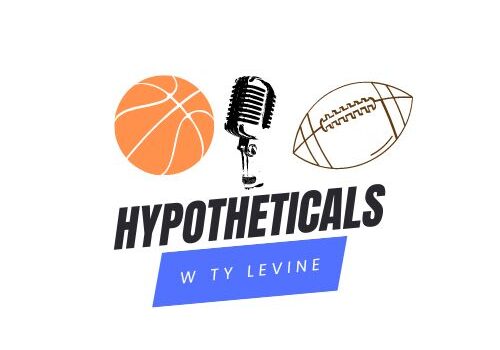

Comments